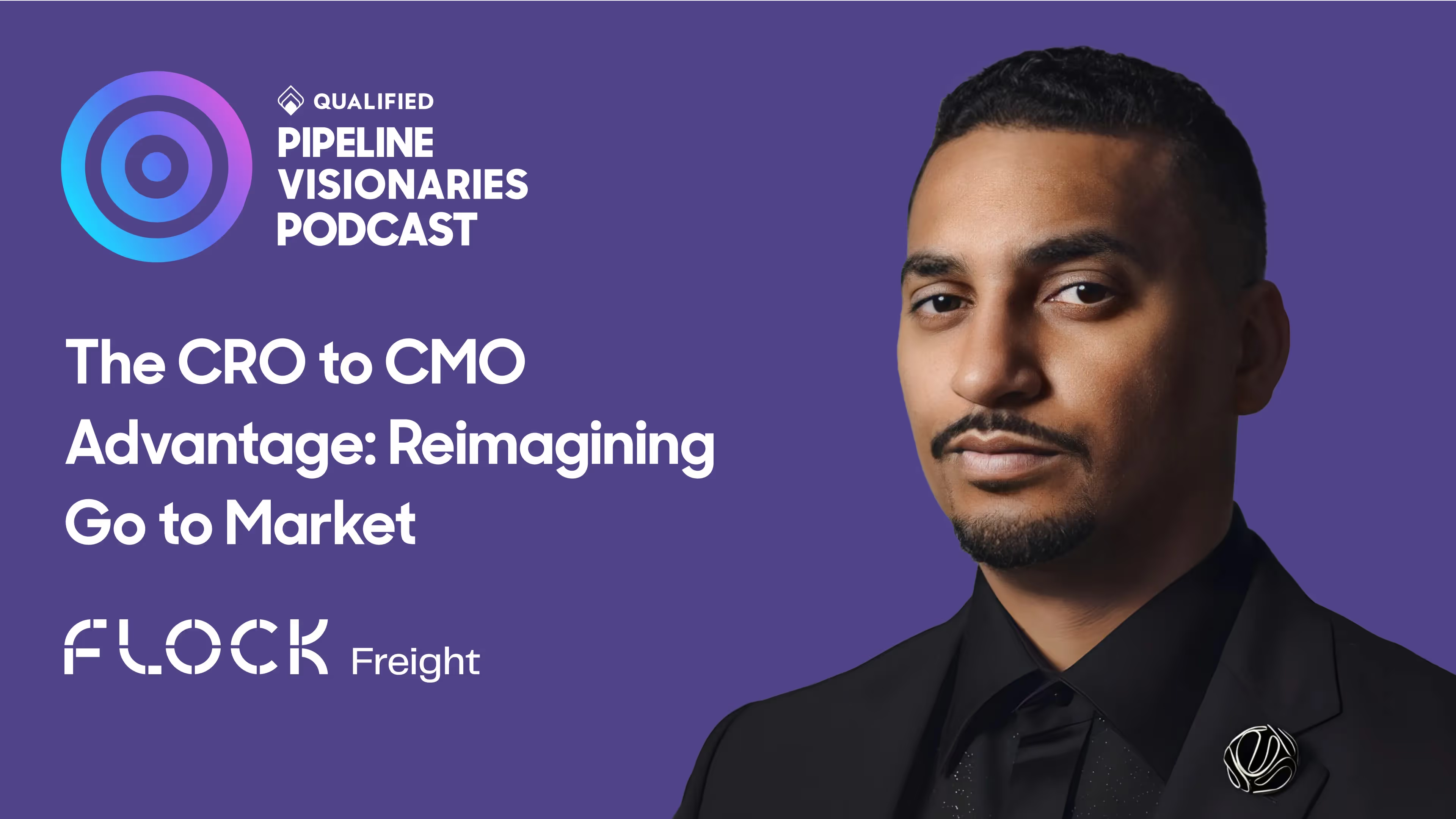The CRO to CMO Advantage: Reimagining Go to Market
Orlando Baeza, CRO & CMO at Flock Freight, and his team are creating a more cost-effective and efficient future for the trucking industry.




Orlando Baeza, CRO & CMO at Flock Freight, and his team are creating a more cost-effective and efficient future for the trucking industry.

This episode features an interview with Orlando Baeza, CRO & CMO at Flock Freight, fixing freight’s biggest weakness by offering a smarter alternative — shared truckload — that moves goods more reliably and with fewer emissions.
In this episode, Orlando shares with us his tips for innovating decades old marketing strategies, the benefit of working under dynamic leadership, and why you should always keep your prospects laughing and learning. Orlando also talks about his journey of becoming the active CRO and CMO at a company like Flock Freight and what it takes to reimagine go to market from org structure and design.
Key Takeaways:
Stay up to date with weekly drops of fresh B2B marketing and sales content.
Orlando Baeza, CRO & CMO at Flock Freight, and his team are creating a more cost-effective and efficient future for the trucking industry.


This episode features an interview with Orlando Baeza, CRO & CMO at Flock Freight, fixing freight’s biggest weakness by offering a smarter alternative — shared truckload — that moves goods more reliably and with fewer emissions.
In this episode, Orlando shares with us his tips for innovating decades old marketing strategies, the benefit of working under dynamic leadership, and why you should always keep your prospects laughing and learning. Orlando also talks about his journey of becoming the active CRO and CMO at a company like Flock Freight and what it takes to reimagine go to market from org structure and design.
Key Takeaways:
Stay up to date with weekly drops of fresh B2B marketing and sales content.
Orlando Baeza, CRO & CMO at Flock Freight, and his team are creating a more cost-effective and efficient future for the trucking industry.


This episode features an interview with Orlando Baeza, CRO & CMO at Flock Freight, fixing freight’s biggest weakness by offering a smarter alternative — shared truckload — that moves goods more reliably and with fewer emissions.
In this episode, Orlando shares with us his tips for innovating decades old marketing strategies, the benefit of working under dynamic leadership, and why you should always keep your prospects laughing and learning. Orlando also talks about his journey of becoming the active CRO and CMO at a company like Flock Freight and what it takes to reimagine go to market from org structure and design.
Key Takeaways:
Stay up to date with weekly drops of fresh B2B marketing and sales content.
Orlando Baeza, CRO & CMO at Flock Freight, and his team are creating a more cost-effective and efficient future for the trucking industry.



This episode features an interview with Orlando Baeza, CRO & CMO at Flock Freight, fixing freight’s biggest weakness by offering a smarter alternative — shared truckload — that moves goods more reliably and with fewer emissions.
In this episode, Orlando shares with us his tips for innovating decades old marketing strategies, the benefit of working under dynamic leadership, and why you should always keep your prospects laughing and learning. Orlando also talks about his journey of becoming the active CRO and CMO at a company like Flock Freight and what it takes to reimagine go to market from org structure and design.
Key Takeaways:
Discover how we can help you convert more prospects into pipeline–right from your website.